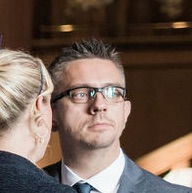Back in late 2013, shortly after I joined traveljunction.com, I managed to internally recruit Tim Gale on to my team. It was a pretty bold move, Tim was sought after across the company but I was pretty determined and didn’t give up.
I’d known of Tim for a while before joining the company and as we began to talk more internally, I knew our views on design synced up really well which made him a good hire and in reality I needed some help.
Before I joined, traveljunction.com lacked design principles and process, but travel industry design as a whole was lacking something even greater.
Time and time again we’ve heard of air fares randomly jacking up because we use a different IP or chose different options in the checkout process, never-mind the dark patterns that we see auto adding you to newsletters when you think you’ve opted out.
What the travel industry was lacking, was honesty, and I believe it still is.
As we began one of the quickest re-alignments of design I’d ever done as part of a team, I took time to speak internally about ‘Honest Design’. If TJ wanted to be different by creating its own honest reviews, then the design in its entirety needed to match this same thinking. I began to jot down some notes, almost guidelines.
- Dark patters would be banned
- All costs would be displayed to the customer so they could make an informed decision
- We wouldn’t use ass-backwards persuasive design
- We would help customers as much as we could based on their needs
- The designed experience wouldn’t stop at checkout, a customers journey would be with us until we never saw them again
We accomplished a few of the above, but as time drew on, it was made apparent that the industry is full of low margins and a fight against all costs to get those bookings in anyway possible. With the increase of ‘meta sites’ (comparison sites), against the likes of companies with their own deals with hotels it’s a literal fight to the death.
Instead of focusing on honest design and helping customers by focusing on their needs, you see travel businesses fixate on sticking with dark patterns and odd tactics to get bookings.
Travel isn’t the only industry either, I’m using that as an example as it’s the industry I’ve been in for the past 2 years.
Now, I’m from a commercial background, I run a conference, I’ve written proposals and pitched for work, I fully understand that money has to come in.
But I sincerely and truly believe there’s a better way to go about things.
My inner-self has never felt compelled to fight the sales fight, it’s just not me. And with that I needed to cleanse my soul, I needed to put effort into something which is far greater than myself, to help others.
It’s one of the reasons I’m starting a new role with the DigitalDWP team this coming Monday. I was incredibly skeptical of whether government would ever allow the GDS to achieve anything when they started but it became clear early on that they were making significant progress and I’ve been a fan of GDS since. Their design principles should be required reading for all.
The soon to be leaving but current Head of Design for GDS, Ben Terrett, wrote yesterday;
Every designer should work in the public sector. Being a civil servant and using your talents to help the people in your country is an honour. In an industry so often obsessed with novelty and persuasion, government is a chance to do real design work.
That’s something I believe in and something I’m going to begin next week.
If what I’ve written above resonates with you, we’re hiring, come and join us.
